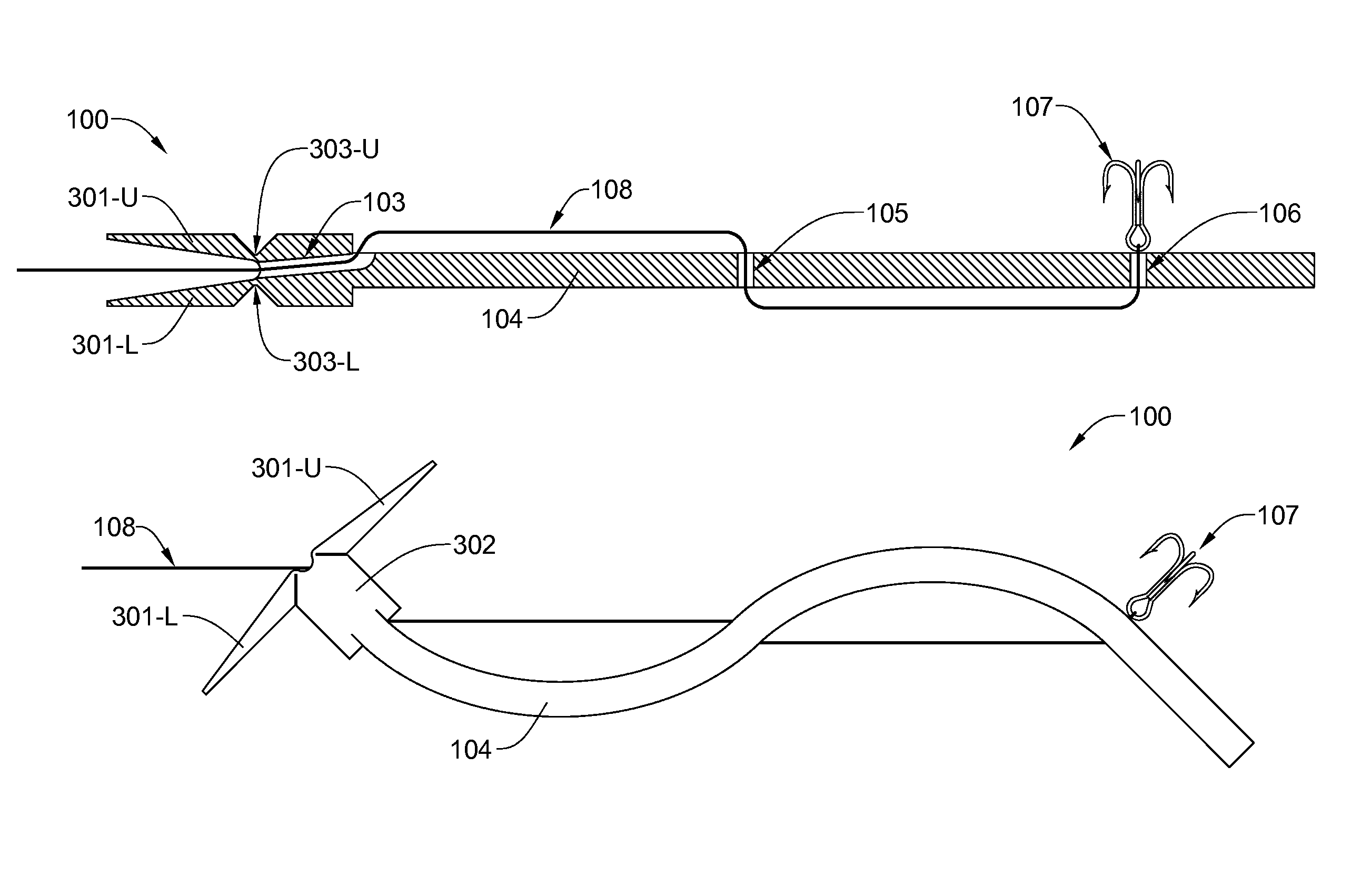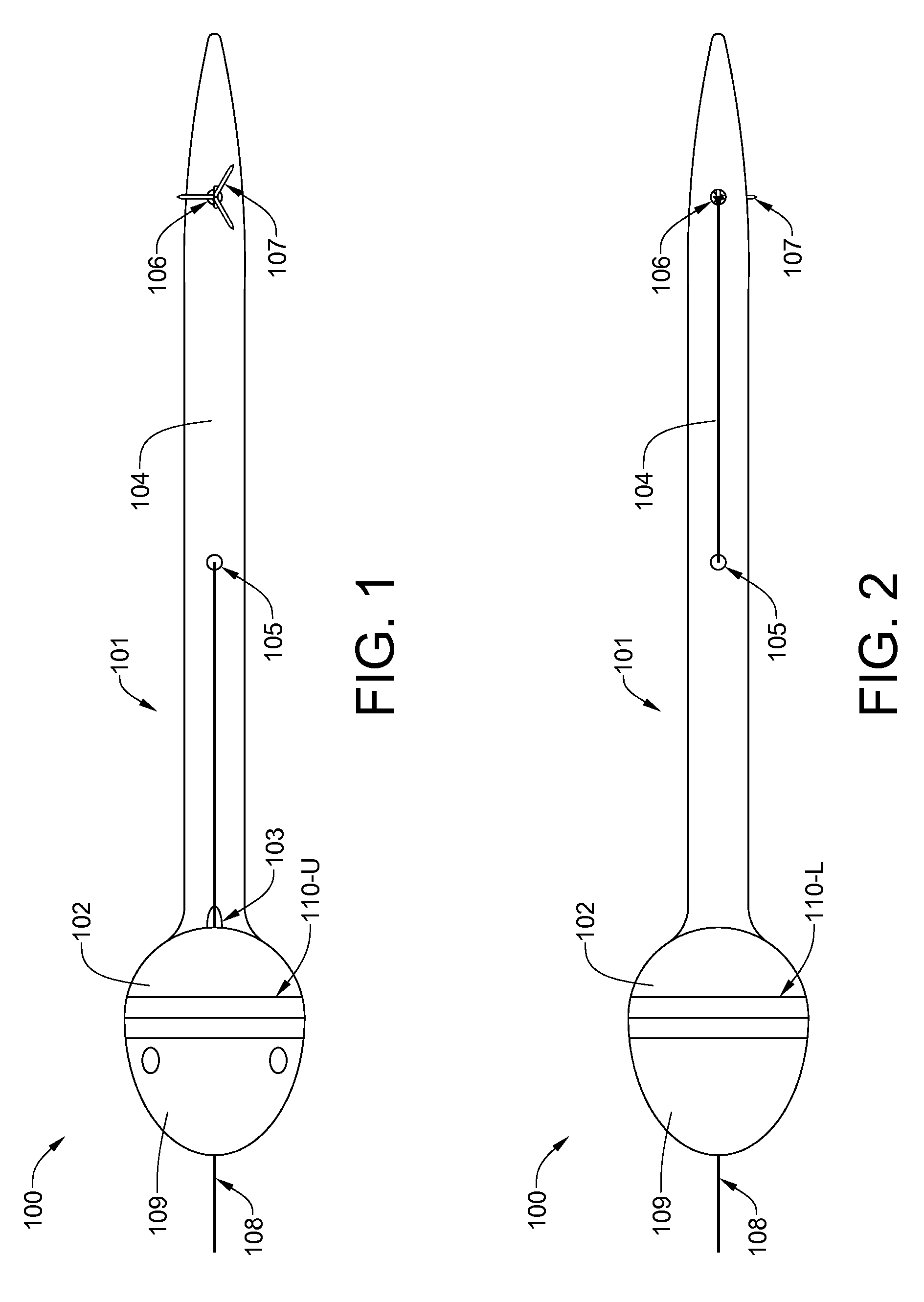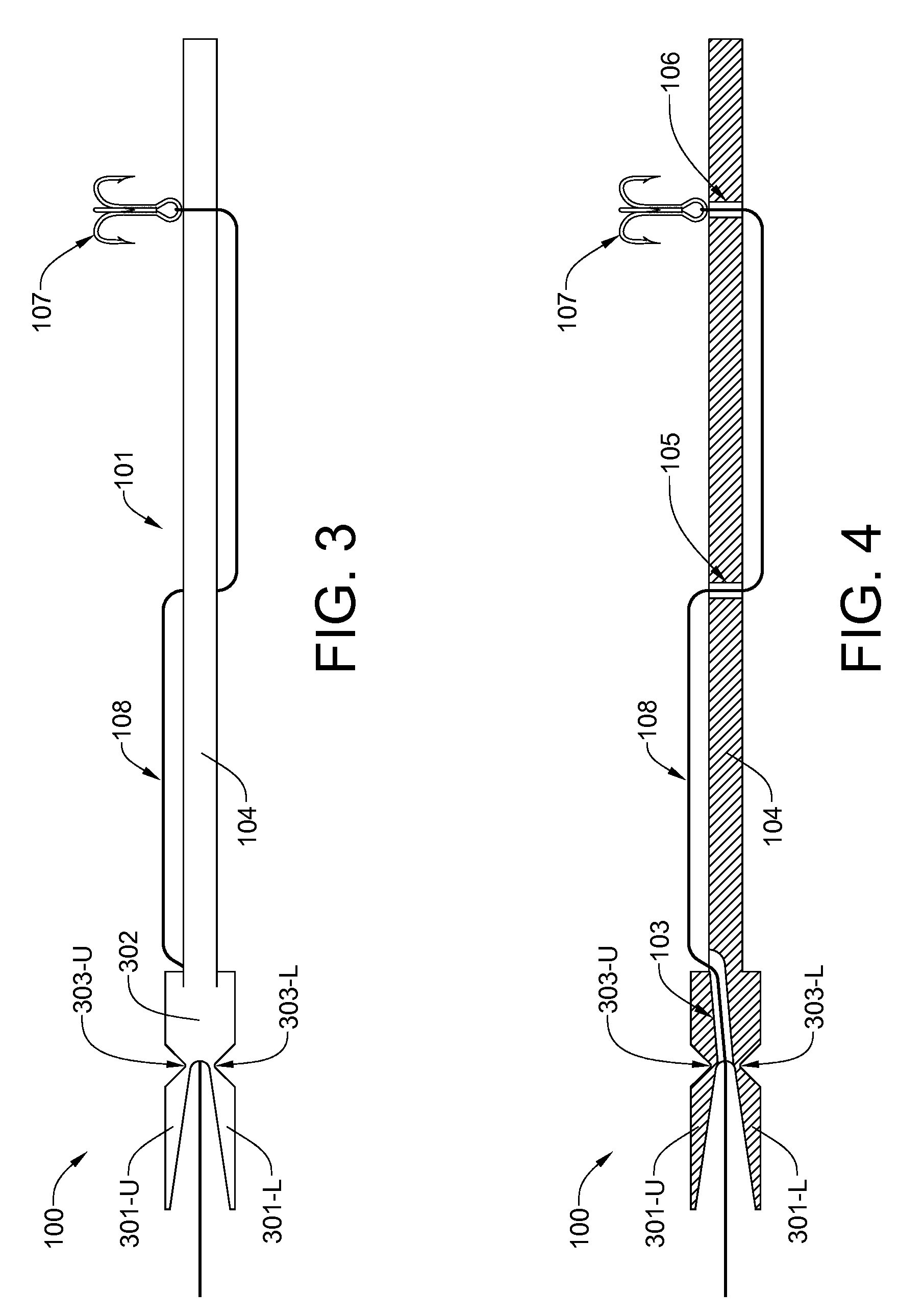Live-bait-simulating resilient puppet fishing lure
a puppet and live bait technology, applied in the field of live bait simulation resilient puppet fishing lures, can solve the problems of flexing of the leg appendages and the body of the lure to wobble through the water, and achieve the effects of reducing sliding friction, reducing manufacturing costs, and reducing friction
- Summary
- Abstract
- Description
- Claims
- Application Information
AI Technical Summary
Benefits of technology
Problems solved by technology
Method used
Image
Examples
Embodiment Construction
The present invention provides a fishing lure having a resilient body, which simulates the movement of live bait when a fisherman tugs on the fishing line. The lure will now be described in detail with reference to the attached drawing figures. It should be understood that the drawings are not necessarily drawn to scale, but are intended to be merely illustrative of the invention.
Referring now to FIGS. 1 through 4, the new fishing lure 100 has a resilient body 101 molded in the shape that is a cross between a worm and an amphibian larvae. The body may be molded from one of many available elastomeric compounds. An elastomeric compound is a polymeric rubber-like material that at room temperature returns rapidly to approximately to its initial dimensions and shape after being substantially deformed by a weak stress, when the stress is released. Both natural and synthetic rubber compounds are suitable eslastomeric materials. Such materials specifically include RTV and HTV silicone rubbe...
PUM
 Login to View More
Login to View More Abstract
Description
Claims
Application Information
 Login to View More
Login to View More - R&D
- Intellectual Property
- Life Sciences
- Materials
- Tech Scout
- Unparalleled Data Quality
- Higher Quality Content
- 60% Fewer Hallucinations
Browse by: Latest US Patents, China's latest patents, Technical Efficacy Thesaurus, Application Domain, Technology Topic, Popular Technical Reports.
© 2025 PatSnap. All rights reserved.Legal|Privacy policy|Modern Slavery Act Transparency Statement|Sitemap|About US| Contact US: help@patsnap.com



